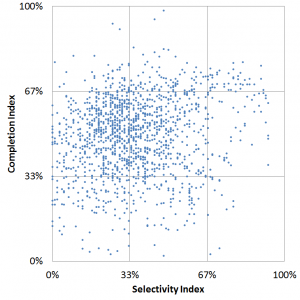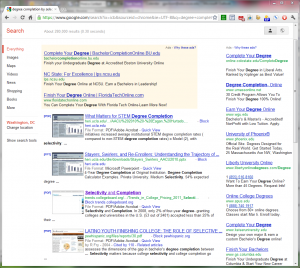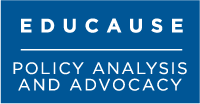Streaming TV: New Tricks and Old Problems
I like to read mysteries. No surprise, I also watch lots of TV cop shows and mysteries.
 Some good reads turn out to be not-so-good TV, and vice versa. Ian Rankin‘s Rebus mysteries and various of Peter Lovesey‘s are an example of the former, and, in my view at least, David Suchet’s Poirot is a lot more interesting and entertaining that Agatha Christie‘s (for that matter, so is Albert Finney‘s). The same is generally true of Leo McKern’s Rumpole of the Bailey compared to John Mortimer‘s.
Some good reads turn out to be not-so-good TV, and vice versa. Ian Rankin‘s Rebus mysteries and various of Peter Lovesey‘s are an example of the former, and, in my view at least, David Suchet’s Poirot is a lot more interesting and entertaining that Agatha Christie‘s (for that matter, so is Albert Finney‘s). The same is generally true of Leo McKern’s Rumpole of the Bailey compared to John Mortimer‘s.
Of course there are lots of good-good examples (the adaptations of P.D. James and Dorothy Sayers, which both read and play well, in part because the adaptations are just that, rather than renditions), and plenty of not-not (for example, again in my view, the MidSomer Murders series based on Caroline Graham‘s books—not, mind, that this stopped me from watching all 70+ episodes of the British series—and the VI Warshawski series based on Sara Paretsky‘s work, which somehow never drew me in despite the Chicago location).
 Then there are TV shows that don’t have book counterparts, and for that matter aren’t exactly cop shows or mysteries. Barney Miller comes to mind, as does Hill Street Blues.
Then there are TV shows that don’t have book counterparts, and for that matter aren’t exactly cop shows or mysteries. Barney Miller comes to mind, as does Hill Street Blues.
The trigger for today’s rumination, New Tricks, is one of those not-exactlys. The BBC describes New Tricks as a “drama series about an eccentric group of veteran police detectives reopening cold cases.” Which it is, but as is the case with much detective fiction, the plot is simply a maguffin to draw us into the characters and their relationships.
The backstory is this: a disgraced Detective Superintendent has shot a dog, and is working her way out the doghouse (sorry, couldn’t resist that) by leading a squad comprising three retired detectives—one who converses regularly with his dead wife, another a womanizing rule-bender who maintains cordial relationships with several ex-wives and their daughters, and an ex-alcoholic third who lives on the medication-honed mental edge between paranoid delusion and photographic memory.
 It’s interesting how little TV watching these days is based on broadcast or cable schedules. We routinely time-shift using the Xfinity (ne Comcast) On Demand services, and we also do considerable binge watching. The first time we binged was back in the red-envelope days, the entirety of Jewel in the Crown over four intense evenings. The most recent efforts were re-watching the British House of Cards in preparation for the Netflix House of Cards. (Both series are superb.)
It’s interesting how little TV watching these days is based on broadcast or cable schedules. We routinely time-shift using the Xfinity (ne Comcast) On Demand services, and we also do considerable binge watching. The first time we binged was back in the red-envelope days, the entirety of Jewel in the Crown over four intense evenings. The most recent efforts were re-watching the British House of Cards in preparation for the Netflix House of Cards. (Both series are superb.)
Usually, though, we don’t exactly binge; rather, we get into a particular show, and then watch one or two episodes per evening until we’ve used it up. That’s how we did MidSomer Murders a while back (despite its endless village fetes), then the excellent George Gently and Vera, and more recently the outstanding and very French Spiral (L’Engrenage).
Some shows we delve into for a while, and then put on hiatus when they become overwhelming or repetitive—the Danish series The Eagle and the inimitable Larry Sanders Show are in that category. That’s probably what would happen with The Phil Silvers Show, which my father loved, and recordings of which supposedly were destroyed in a fire. Your Show of Shows. Rowan and Martin’s Laugh-In.
But I digress. Friends told us about New Tricks, and so we went looking for it. A local PBS station supposedly is planning to air some of it, but we figured this was a show we should watch from the beginning, and so we wanted the earlier episodes.
Which finally brings me to the actual topic for today: What it took to find and watch New Tricks says a great deal about what needs to improve if the online-viewing marketplace is to succeed. Here’s how the quest went:
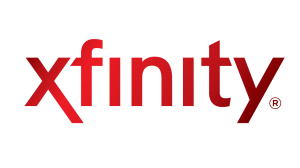 Xfinity On Demand. Searching isn’t easy through the TV: you need to move a cursor around letter by letter using the remote. Using the Xfinity app on a phone or tablet is much easier, since one can just type in a search term to find a show’s schedule. (The app can even tell the cable box to change channels!) Anyway, no luck—Comcast doesn’t have New Tricks.
Xfinity On Demand. Searching isn’t easy through the TV: you need to move a cursor around letter by letter using the remote. Using the Xfinity app on a phone or tablet is much easier, since one can just type in a search term to find a show’s schedule. (The app can even tell the cable box to change channels!) Anyway, no luck—Comcast doesn’t have New Tricks.- Netflix. Of course the Comcast cable box doesn’t do Netflix (the fact that I said “of course” is telling—
 competition most definitely trumps consolidated customer convenience), so I had to switch to one of our two Netflix-enabled devices (the Sony BluRay player or the AppleTV, both connected to our home network), after first telling the TV to use the appropriate HDMI input. Search using the BluRay or AppleTV remote isn’t any easier than with the Comcast box, but at least the Netflix app has good search tools. However, it tells me that “New Tricks is unavailable to stream” (and then suggests George Gently or MidSomer Murders). So, no luck again.
competition most definitely trumps consolidated customer convenience), so I had to switch to one of our two Netflix-enabled devices (the Sony BluRay player or the AppleTV, both connected to our home network), after first telling the TV to use the appropriate HDMI input. Search using the BluRay or AppleTV remote isn’t any easier than with the Comcast box, but at least the Netflix app has good search tools. However, it tells me that “New Tricks is unavailable to stream” (and then suggests George Gently or MidSomer Murders). So, no luck again. 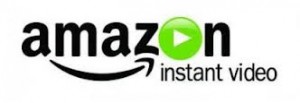 Amazon Instant Video. That only works on the BluRay player, not the AppleTV, and its app is a bit awkward, so tired of moving the cursor around I go right to the Amazon website on a computer. No luck on Prime Instant Video, the flat-rate subscription service I get by being a Prime customer—but at least Amazon offers an alternative, albeit for streaming purchase (not rental) at $4 per episode or $20 per season. The 8 seasons available for streaming would cost me $160 that way, still cheaper than the $240 I’d pay for DVDs (except there’s a DVD lagniappe: Season 9 is available!).
Amazon Instant Video. That only works on the BluRay player, not the AppleTV, and its app is a bit awkward, so tired of moving the cursor around I go right to the Amazon website on a computer. No luck on Prime Instant Video, the flat-rate subscription service I get by being a Prime customer—but at least Amazon offers an alternative, albeit for streaming purchase (not rental) at $4 per episode or $20 per season. The 8 seasons available for streaming would cost me $160 that way, still cheaper than the $240 I’d pay for DVDs (except there’s a DVD lagniappe: Season 9 is available!).- Hulu (which I don’t subscribe to, so searched only for completeness): No luck.
 I’d heard about a new site sponsored by MPAA, wheretowatch.org, and so figured it was worth a try. Unfortunately, there’s no search tool on that website; instead, it points me to six other search sites. Among those, Flixster and Movies.com return no results. Jinni tells me I can rent the DVD from Netflix. TV Guide tries to take me to a www.tvshowsondvd.com website, presumably so I will buy the DVD, but NBCUniversal’s network malware filter blocks the site with a scary popup message, and being a good network citizen I accept my colleagues’ judgment and don’t bypass the block. Zap2it points me to the $4/episode Amazon offering. Finally, TV.com tells me that I could have watched the show in October 2012 (but only on the BBC, in the UK). None of that is helpful.
I’d heard about a new site sponsored by MPAA, wheretowatch.org, and so figured it was worth a try. Unfortunately, there’s no search tool on that website; instead, it points me to six other search sites. Among those, Flixster and Movies.com return no results. Jinni tells me I can rent the DVD from Netflix. TV Guide tries to take me to a www.tvshowsondvd.com website, presumably so I will buy the DVD, but NBCUniversal’s network malware filter blocks the site with a scary popup message, and being a good network citizen I accept my colleagues’ judgment and don’t bypass the block. Zap2it points me to the $4/episode Amazon offering. Finally, TV.com tells me that I could have watched the show in October 2012 (but only on the BBC, in the UK). None of that is helpful. Finally I do what I’d usually do first: use Google. The search term “new tricks tv streaming” brings up several links, many of them to copyright-infringing, pirate sites. However, the first link, the legitimate ovguide.com, takes me back to Amazon’s $4 offering. And the second is the mother lode: Idaho Public TV has several seasons of New Tricks available for public, free streaming.
Finally I do what I’d usually do first: use Google. The search term “new tricks tv streaming” brings up several links, many of them to copyright-infringing, pirate sites. However, the first link, the legitimate ovguide.com, takes me back to Amazon’s $4 offering. And the second is the mother lode: Idaho Public TV has several seasons of New Tricks available for public, free streaming.
Of course, I want to watch on the TV, not on my iPad. A little more technology solves this problem: I switch our TV’s input to the AppleTV box, start up a New Tricks episode on the iPad, and AirPlay almost automatically redirects the video and sound to our TV. Very cool. (Trying this on an Amazon-hosted show, however, I discover that in some cases, apparently for licensing reasons, Airplay weirdly plays the audio track on the TV set but the video on the iPad—why, I wonder, do that rather than Just Say No, or play everything on the iPad?)
Two observations.
 First, it can be really hard and confusing to find video material online. There’s no overall search engine that covers all sources, so far as I can tell—at least, no legitimate overall search engine. (Although Google found what I was looking for, even its results were incomplete, since it didn’t point me to the fee-per-episode Amazon offering, and unfortunately it also suggested several sites offering presumably illegal copies.) Even when one finds material, further searching is sometimes necessary; for example, the excellent cop show Vera has one season available on Netflix, but two on Amazon Prime Instant Video, which you’d never know if you stopped once you found it at Netflix.
First, it can be really hard and confusing to find video material online. There’s no overall search engine that covers all sources, so far as I can tell—at least, no legitimate overall search engine. (Although Google found what I was looking for, even its results were incomplete, since it didn’t point me to the fee-per-episode Amazon offering, and unfortunately it also suggested several sites offering presumably illegal copies.) Even when one finds material, further searching is sometimes necessary; for example, the excellent cop show Vera has one season available on Netflix, but two on Amazon Prime Instant Video, which you’d never know if you stopped once you found it at Netflix.- Second, technology remains as much an obstacle as an enabler. For routine TV viewing at home, we use six devices: Sony and Panasonic TVs, two Comcast/Xfinity Motorola cable boxes, a Sony BluRay player, and an AppleTV. (I supposed our iPads and iPhones should be on this list too. We have two each of those.) Three of the devices are plugged into separate HDMI ports on the TV, and two of them (plus the iOS devices) require connections to our home network, which is connected to Comcast. (As a fringe benefit—I suppose—the landline that’s also provided by Comcast displays caller ID on the TV set, at least when we’re using the cable box; that way we can ignore fundraising calls without looking at our phones.
 Even better, we get caller ID and voicemail for our landline on a smartphone app. Even when it’s being frustrating, technology can be cool. But I digress again.) Each TV-related device has a remote, with only partially overlapping functionality—for example, the BluRay’s remote can change the TV’s inputs and adjust volume (the Comcast remote can also change the TV’s inputs, albeit awkwardly) but the BluRay remote can’t change cable channels. The AppleTV remote can only control that device, so watching TV through the AppleTV almost always requires using two remotes, one to choose materials and pause the video on the AppleTV, and the other to adjust
Even better, we get caller ID and voicemail for our landline on a smartphone app. Even when it’s being frustrating, technology can be cool. But I digress again.) Each TV-related device has a remote, with only partially overlapping functionality—for example, the BluRay’s remote can change the TV’s inputs and adjust volume (the Comcast remote can also change the TV’s inputs, albeit awkwardly) but the BluRay remote can’t change cable channels. The AppleTV remote can only control that device, so watching TV through the AppleTV almost always requires using two remotes, one to choose materials and pause the video on the AppleTV, and the other to adjust
TV volume. When the technology all works, it’s very nice. When it doesn’t, debugging is a nightmare: pressing buttons on different remotes, jiggling cables, checking Internet connections, and so forth. We tried a universal remote for a while, with the same result: great when it worked, nightmare when it didn’t.
Complexity like this is unfortunate, frustrating, and counterproductive, but perhaps, barring change in the economy of entertainment, unavoidable. Sadly, it deters consumption, especially legitimate consumption. The usual ways out of this—common standards, competition on quality and price, such as returned somewhat to the music world—have so far proven elusive for online TV watching. That’s in part because providers and distributors are quite rationally trying to monetize the material they control, and making it easy for people to find other material, or to change sources, doesn’t achieve that. A true conundrum.
Meanwhile, New Tricks is great fun. We’ve just started Season 4…
